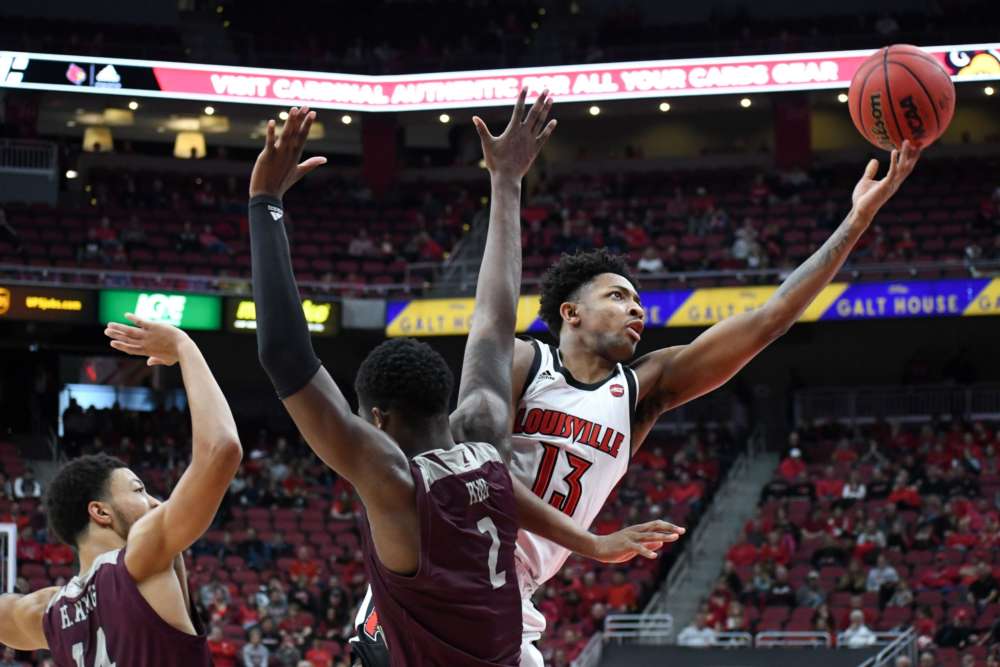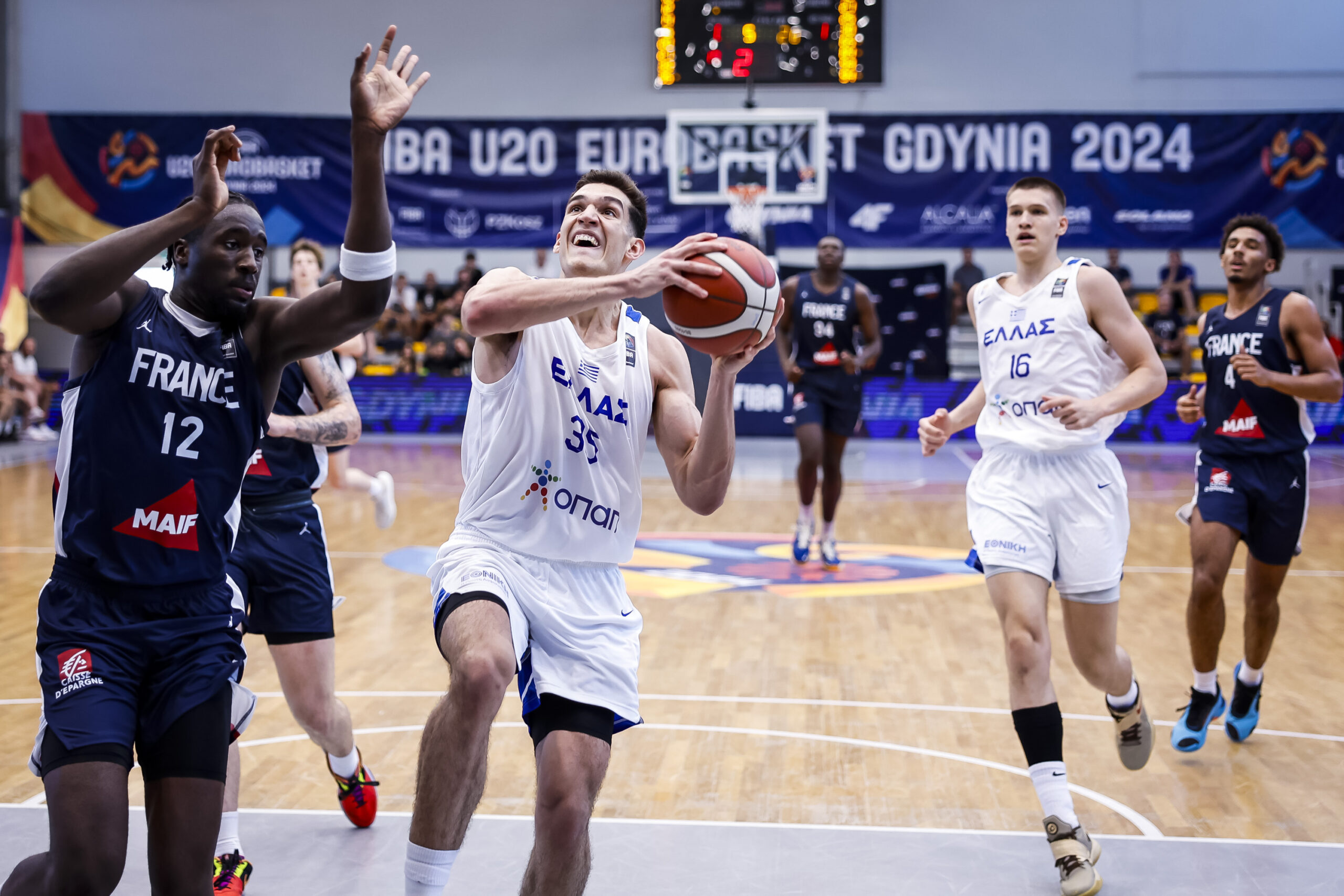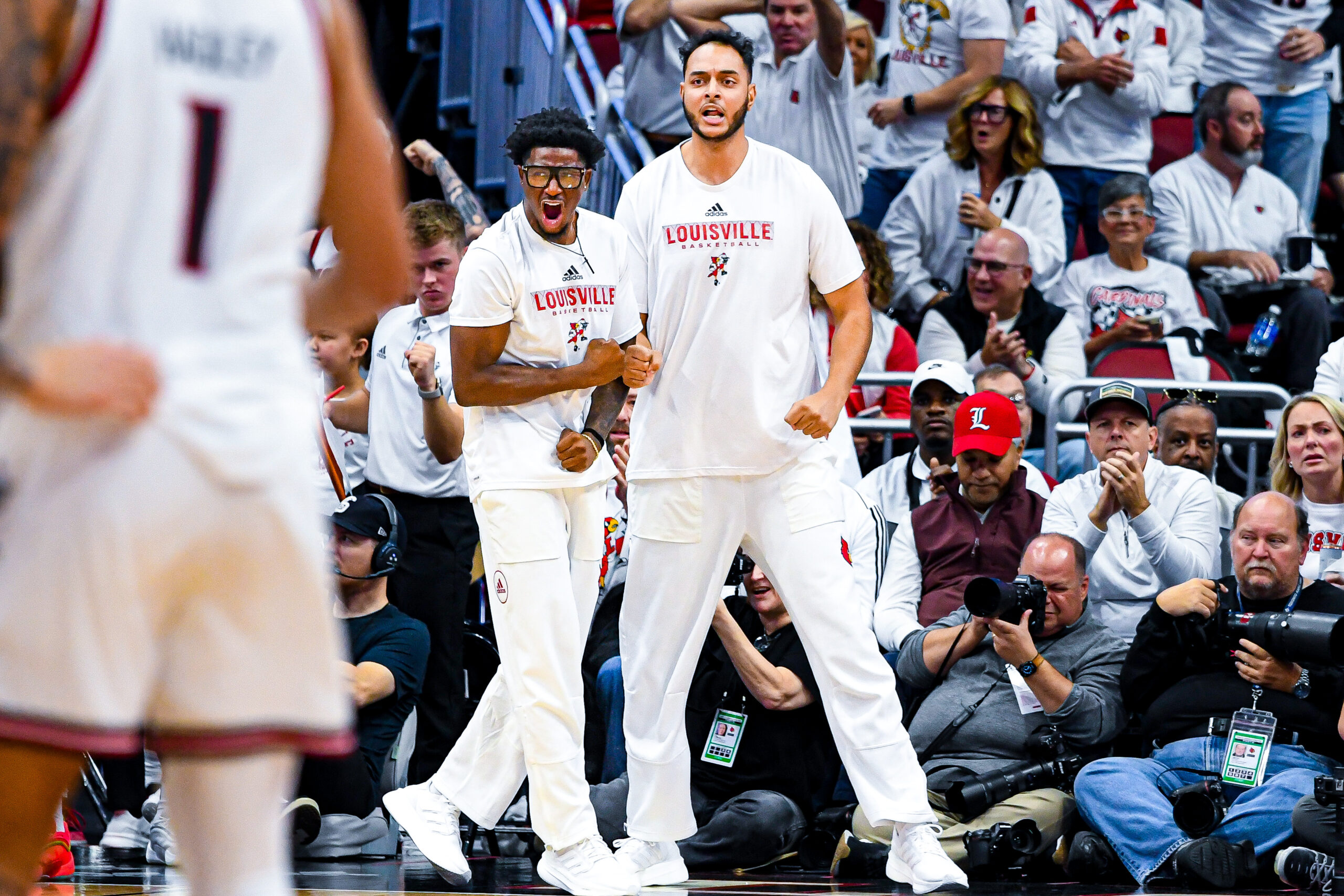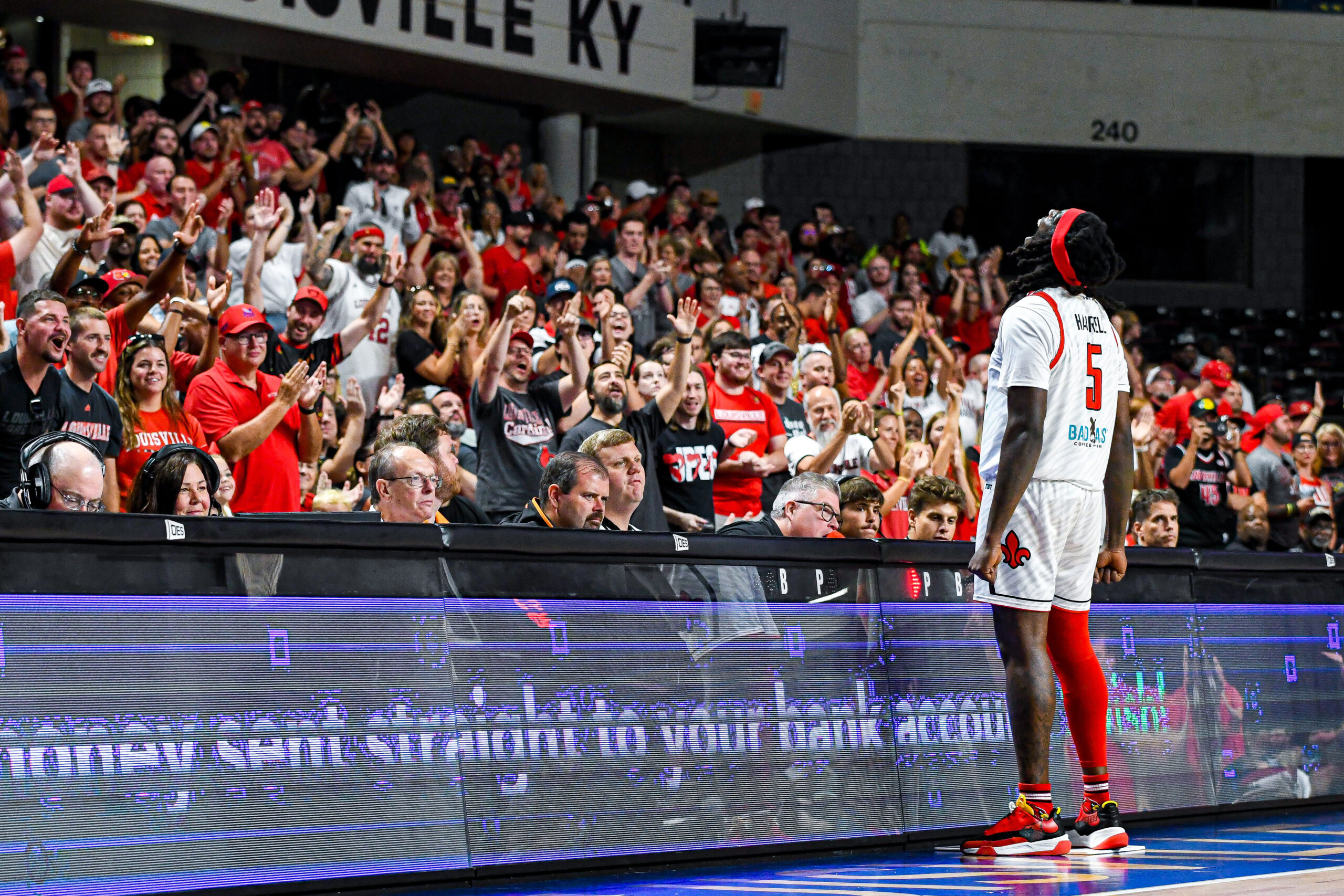Louisville basketball picked up a much-needed win over Pittsburgh, moving to 1-0 in ACC play. What to like, dislike, and question going forward.
Pittsburgh entered Tuesday night’s matchup with Louisville basketball playing arguably its best basketball under Jeff Capel. Unfortunately, as we’ve seen in this weird basketball season, you have to expect the unexpected.
The Panthers experienced that first-hand with their head coach testing positive for COVID-19 just days before the game and two of its top three players ruled out with injuries. Still, the challenge presented by the Panthers was one more about the mental fortitude of a young program rather than a question of its talent.
From the start, it was apparent Louisville was focused on toughness. Not only with its play but with communication. Early on, Louisville basketball scored the ball at the level we knew they could, starting with a 24-10 lead. The Cards outrebounded a good rebounding Pittsburgh team. This allowed for more transition and floor spacing. Most importantly they defended.
However, this didn’t last long.
Pittsburgh answered back after taking a punch early, going on a 16-2 run. As shots weren’t falling for Louisville, you could see the team start to press. It led to more turnovers and easy buckets on defense, much like what we saw against Wisconsin.
Did you have Femi Odukale as the difference maker entering the game? Yeah, me either.
Entering the game averaging 2 points, Odukale like was not heavily scouted. Yet, he hit six shots in the first half, and propelled Pittsburgh all the way back to tie it up. Still, the Cards entered halftime with a slight lead, shooting 43% from the field and leading in the rebound margin handily.
In the second half, Louisville let Pittsburgh hang around for far too long. Xavier Johnson and Nike Sibande continued to attack the Louisville defense, scoring 13 points combined but it wasn’t enough. Thanks to strong rebounding and more focus on scoring inside, Louisville eeked out a 10 point victory and can now turn its full attention to Kentucky.
Before we do that as a site, let’s take one more look at what there was to like and what there was to hate about Tuesday’s win.
What to like: The difference Carlik Jones makes
It was clear against Wisconsin that when all the defensive focus was on David Johnson, he wasn’t quite the same player. Turning the ball 7 times and shooting 38% from the field, Wisconsin focused on making Johnson beat them.
Pittsburgh didn’t have that fortune. On Tuesday, Carlik Jones returned to the lineup after passing ACC return to play guidelines. The difference he made was apparent from tip-off and it obviously played a huge role in the Cards being able to hang on.
Without fans in the building, there was literally no sound, so everything players said could essentially be heard. Against Wisconsin, Louisville basketball wasn’t communicating on either end and it led to a lot of breakdowns. Against Pittsburgh, you could hear the difference, and it started with Jones. Louisville talked the whole game – communicating ball screens, switches, open men, etc. While they weren’t perfect, the leadership that Jones provided helped the team dig in and keep the lead throughout.
How Jones’ return impacted Louisville basketball
Jones also changed the dynamics of the offense for Louisville with his ability to beat his man off the dribble. Though he struggled shooting the ball, going 3-12 from the field, Jones stayed aggressive and kept the offense moving when he was in. Jones relentlessly attacked Pittsburgh’s defense and took what they gave him. Whether it was getting fouled and going to the free-throw line, or picking up an assist- he led all players with 7- that pressure opened things up for Louisville and allowed them to not force things.
That action also led to much better offensive performances from Johnson and Sam Williamson, who carried the scoring load. After going 7/21 against Wisconsin, the two went 12/21 from the floor and combined to score 31 of Louisville’s 64 points. Both played much more efficient basketball, mostly because of the attention Jones garnered.
When he’s on the floor, everyone around him has their game elevated to a different level. That’s something we haven’t seen at point guard since the days of Peyton Siva.
What to dislike: Still no established offensive identity
Last season, Louisville’s offense lived and died by the three-pointer thanks to Jordan Nwora and Ryan McMahon. No matter what happened in a game, you knew that it was going to likely come down to the team’s ability to make threes.
Entering the season, it was widely believed that the new-look Cardinals would struggle from three but would be really good scoring around the rim. Up until this point that’s proven to be true. Louisville has shot just 34.1% from three so far this season, which ranks 149th in the nation. They have connected on 55% of their 2 point shot attempts.
As we saw against Pittsburgh, when attacking off the dribble by way of pick and roll or simply breaking a man down, it creates a ton of action for Louisville. That includes a lot of shots closer to the rim, whether in the paint or from mid-range.
How this impacts Louisville basketball
We know what their strengths and weaknesses are, but we’ve also seen that Louisville doesn’t stay within themselves for a full 40 minutes. Against Wisconsin, Louisville attempted 14 threes hitting just 5. Against Pittsburgh, a team without two of their top defenders, the Cards shot 17 threes, connecting on only four.
A lot of those threes are open ones coming off kick-out passes, but they still aren’t necessarily great shots for this group. No one aside from Jones and J.J. Traynor is shooting over 35% from deep. Instead, it goes 33.3% (DJ), 30% (Sam), 27.8% (Dre), and 12.5% (Quinn).
They clearly aren’t dynamic from three, and they also aren’t a team capable of dumping down to a posting big. Jae’Lyn Withers has been solid this season but is by no means a polished back to the basket five-man. With Louisville unable to go to any big for an easy post bucket, it’s putting even more pressure on ball screens leading to scoring.
Against Pittsburgh, you saw Louisville either living and dying by the three or using ball movement to get better open looks. When they got into the 2-point area, they were essentially unstoppable.
In a modern game where the 3 point shot means everything, Mack’s team has found success in a more traditional way. The more they get inside and attack the basket, the more success Louisville will have.
If we see long spurts of deep threes and forced shots as we did against Wisconsin and Pittsburgh, this is not a team capable of winning that way on many occasions.
What to like: Louisville attacked the glass with a purpose
Growing up my mom, who was my biggest basketball cheerleader and coach, used to tell me “son, when that ball comes off the glass you just have to want it more.” On Tuesday night, Louisville wanted the basketball more and it showed in the box score.
After the blowout on Saturday, Mack challenged his team to be tougher. There were excuses everywhere to pull from, but he wanted to see more effort and even more mental toughness.
He got it against Pittsburgh as Louisville attacked the glass harder than they have in the Mack era. Going up against a tough rebounding team, Louisville cleaned the glass, out-rebounding Pittsburgh 45-26. They were led by Williamson and Johnson who combined to grab 23 boards. Withers pitched in 7 more and Traynor provided 5 off the bench.
It was a team effort from the start. What has to make Mack proud is the fact that they grabbed 15 offensive rebounds, led by 5 from Withers. This gave Louisville a huge opportunity for second-chance points, something they connected on against Pittsburgh more times than not.
Mack was complimentary of the effort of Johnson and Williamson in the postgame.
“They’re hard to block out at their position,” Mack said. “David, not too many two guards in the country are going to rebound with the ability that he has. He’s got long arms, he’s got great timing, he’s strong. He certainly gets up off the floor, and we train him to go both offensively and defensively to the glass. Sam, I thought really played with a really good nose for the ball, and we needed that. I think coming into the game, the mindset was we got to keep guys like (Au’Diese) Toney and (Justin) Champagne off the glass. Certainly they’ve got younger guys now when those two go out, but nevertheless we did the job on the glass.”
If Louisville attacks the glass as they did against Pittsburgh, it changes everything. More possessions and more opportunity for points all while limiting the impact from the opponent.
What to question: How does this translate to Kentucky?
I think most Louisville basketball fans watched the Pitt game through the lens of “how does this impact us against Kentucky?”. And who could blame them?
There’s something about the rivalry that the program can’t seem to overcome. Mack is 0-2 since arriving in Louisville, while the Cards have won only twice since John Calipari’s arrival in 2009. There are no excuses that will satisfy Louisville fans should they lose and you can bet your ass every fan was praying for a strong performance leading into that game.
It wasn’t pretty but it was a win and now Louisville will attempt to carry that momentum into the big matchup.
So will the big rebounding numbers and success scoring in the paint carry over? Or, will Kentucky show up and start splashing threes and throwing lobs for the first time this season as we’ve seen in years past?
Kentucky is coming off of five straight losses and looks like a team ready to implode. The last week has been nothing short of a soap opera for UK. Yet, somehow, no one will be surprised if they show up and play their best basketball of the season.
The stats show that Louisville is a significantly better team, which should give fans confidence. Yet, with the first ACC win in the bag, we still won’t be able to stop thinking about who is going to show up and drop a 30 burger on the Cards.





